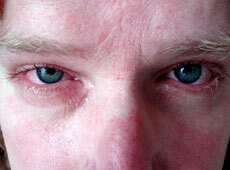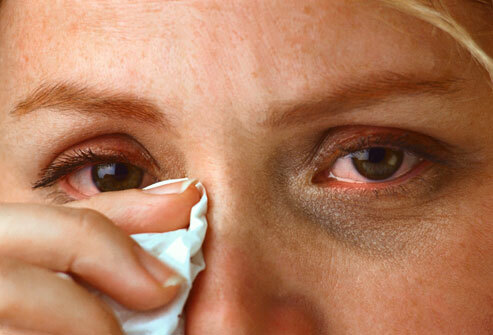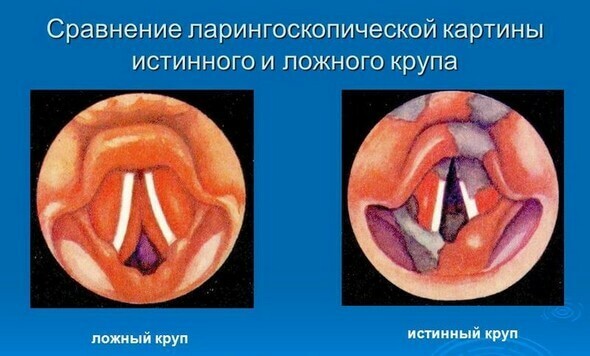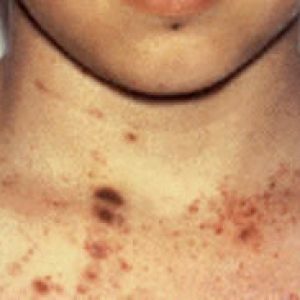Allergic to the eye
 Allergic to the eyes - inflammatory lesions of the mucous membrane of the eye, developing due to contact with an allergen and manifested by lacrimation, photophobia, itching, redness and irritation of the eyelids, edema surrounding the eyeball areas. In some cases, an allergic reaction to the eyes can lead to a visual impairment. Although once in a lifetime, perhaps, every person encountered these unpleasant sensations
Allergic to the eyes - inflammatory lesions of the mucous membrane of the eye, developing due to contact with an allergen and manifested by lacrimation, photophobia, itching, redness and irritation of the eyelids, edema surrounding the eyeball areas. In some cases, an allergic reaction to the eyes can lead to a visual impairment. Although once in a lifetime, perhaps, every person encountered these unpleasant sensations
Allergic to the eye - the causes of
The invasion of the allergen is usually the first to respond to the eyes and skin, which serves as a kind of signal about the impending danger. Allergies around the eyes often develop due to an immune malfunction, often the influence of the hereditary factor is traced.
For the development of an allergic reaction, the eyes are the ideal site of the body. It all begins with the conjunctive condition of the irritating factor, which causes the development of further symptoms of the disease.
Allergy around the eyes often accompanies such diseases as allergic rhinitis, bronchial asthma and atopic dermatitis. Other causes of the development of this disease of allergic nature include:
• Stitches after surgery on the eyeball, wearing contact lenses
• Taking certain medications
• Household dust. With this type of allergy, eyes are usually watery and itchy, there is a painful eyelid when they move
• Volatile chemical compounds. Usually observed in people employed in the pharmaceutical and chemical industries. There is an allergy around the eyes in the form of red spots or small spherical rashes
• Scales of reptiles, feathers of birds, saliva, sweat and animal hair. With this type of allergy, a person has an obsessive cold, sneezing and reddening of the eyes
• Pollen of plants. A fairly severe seasonal disease of an allergic nature, which is manifested by a tumor and eye pains, allergic rhinitis, etc.
• Makeup. Allergy under the eyes can sometimes develop due to intolerance to certain components of cosmetics. Usually this happens in case of using cheap cosmetics, in the process of manufacturing of which poor-quality raw materials are used. The first signs of such an allergy are local redness and swelling of the eyelids, bags under the eyes of
• Low temperatures. In the eyes of an allergy to cold manifests their reddening and tear when leaving in a frosty time on the street, it can sometimes be accompanied by cold conjunctivitis and allergic rhinitis
With infectious conjunctivitis are also sometimes observed infectious component connection, causing the development of so-called infectious and allergic conjunctivitis
allergy eyes -Types
There are following types of allergic reactions on the eyes:
• Spring keratoconjunctivitis. Usually has a chronic form and affects boys up to the age of twelve, which is due to the unsettled hormonal background of
• Conjunctivitis caused by pollinosis. This manifestation is directly related to the seasonal flowering of trees and plants. With the onset of colds usually passes
• Chronic allergic conjunctivitis. Symptomatology depends on the current state of the body, often not expressed explicitly, but
recurs constantly • Allergic conjunctivitis caused by contact lens wear
• Infectious allergic conjunctivitis. It develops due to bacterial infections of the oral cavity and nasopharynx, as well as inflammatory pathologies of the respiratory system
• Large papillary allergic conjunctivitis. The development of this disease causes an irritating tarsal part of the upper eyelid foreign body( contact lenses, eye prostheses, grains of sand, etc.).Most often this type of allergy occurs in people who work in an environment with small particles of various substances flying in the surrounding air.
• Medication allergic conjunctivitis. Allergy eyelids eye can be triggered almost any medical preparation
By specificity pathogenesis of allergic to the eyes is divided into acute and chronic, the acute form develops for over an hour from the time of direct contact with the provoking allergen and chronic manifested through day or more, andUsually occurs alternate damping and recurrence of symptoms 
Allergy of the eye - symptoms of
Allergic reaction to the eye is usually manifested by the following symptoms:
• Partial or extensive redness of the conjunctiva of the eye, in which both eyes are affected, but the development of the inflammatory process begins in one
• Usually extensive swelling of the lower and /Not amenable to the standard methods of their elimination by cold compresses and diuretics. Often edema develops so intensively that lead to the so-called "swollen cornea"
syndrome • Sand sensation and burning sensation in the eyes, itching on the eyelids becomes stronger
• Uncontrolled movements of the upper eyelid( optosis)
• In case of an acute acute process of the eyesCan be observed purulent discharge
• Photophobia, which often leads to excessive lachrymation
Diagnosis of eye allergy is carried out as follows:
To exclude or confirm hereditaryThe collection of anamnestic information is carried out, and this also makes it possible to determine the presence of concomitant or major diseases. Assign general urine and blood tests, a biochemical study of blood serum, an immunogram, bakpos, cytology. To determine the specific allergen, special skin tests are performed. If any underlying disease is present, additional diagnostic tests( CT, gastroscopy, ultrasound, etc.) are performed.
Allergy on the eyes - treatment of
In case of allergy under the eyes and eye allergy observed for more than a day, one should resort to specific treatment of the dataAllergic manifestations. Treatment of eye allergy begins with the standard antiallergic procedure, which consists in the exclusion of contact with a provoking allergen. If contact lenses have led to the development of this reaction, they should be replaced with glasses for the duration of treatment, and after recovery, try to pick up their hypoallergenic analogues. If the allergy was caused by ingress of a foreign body, it should be removed as soon as possible and then, if possible, avoid places of increased risk of contact with these factors.
It is shown the appointment of local ophthalmic treatment, in which special eye drops are applied, the allergy to which reacts extremely negatively and the symptoms in the form of itching and redness pass very quickly. Usually, such eye drops as Cromosyl, Lecrolin, Allergodil, Alomide are used. In the case of cross-infection, the use of drops containing antibiotics is indicated. In severe course of this type of allergy hormone-containing drops for eyes are shown. In addition to eye drops, there is a parallel reception of antihistamines. It should be noted that antiallergic eye drops are not the basis of therapy and only neutralize the symptom, therefore, in the case of the impossibility of eliminating the allergen, the above-described basal therapy is not performed.
Allergic to the eye often gives such complications to the cornea as hyperkeratosis, erosion and keratitis. Therefore at the first allergic signs it is necessary to address to the ophthalmologist, the therapist or the allergist. In case of allergic eye diseases, self-medication is unacceptable. All drops are very specific, without exception, so only a qualified doctor should prescribe and select them.



